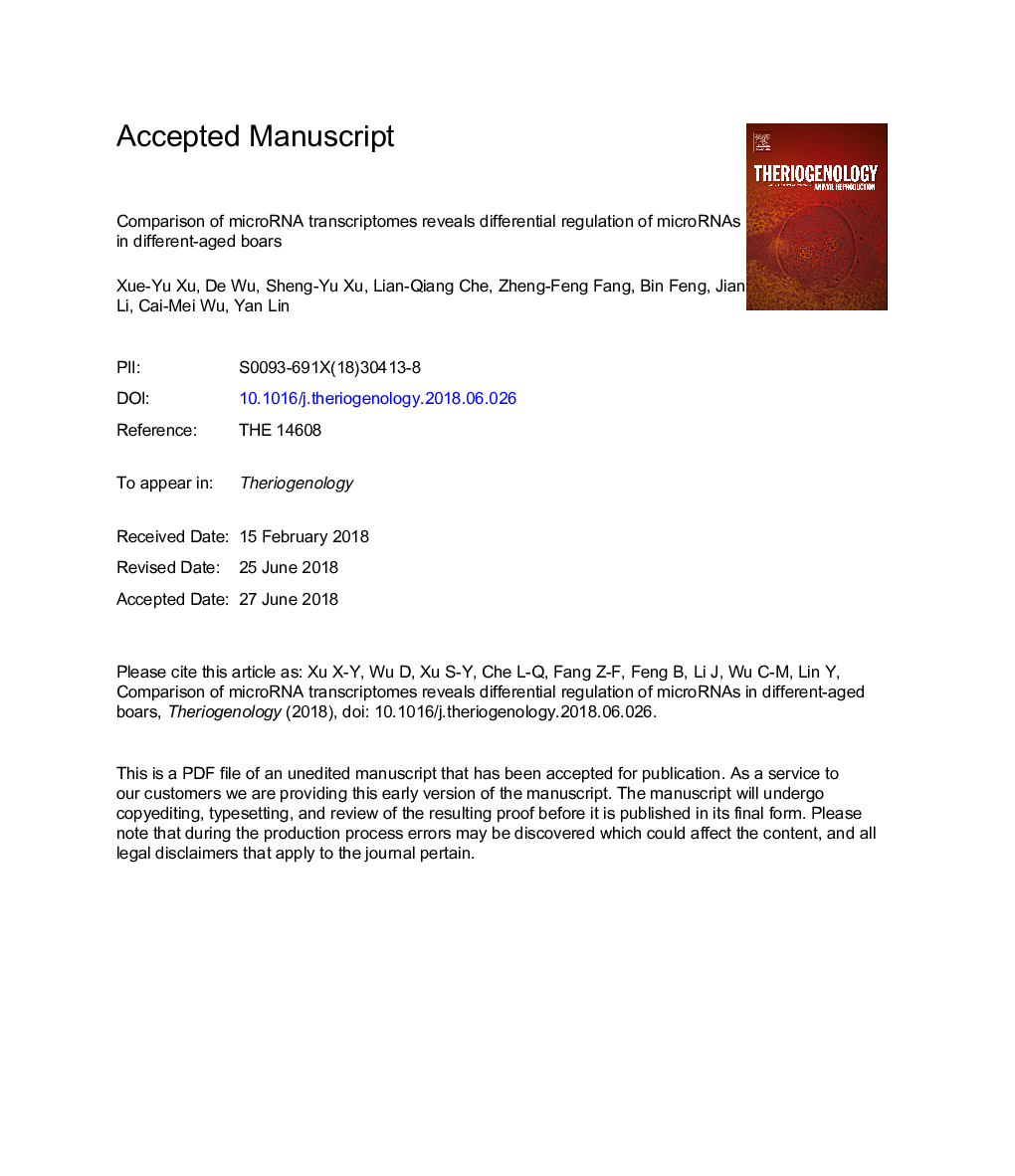| Article ID | Journal | Published Year | Pages | File Type |
|---|---|---|---|---|
| 8426178 | Theriogenology | 2018 | 34 Pages |
Abstract
To elucidate the role of microRNA (miRNA) during early testicular development, we constructed three small RNA libraries from boar testes at three timepoints. Utilizing Solexa deep sequencing technology, over 12 million reads were measured. Of a total of 263 known miRNAs, 159 were co-expressed in all libraries. Read counts of the top 20 most abundant miRNAs accounted for more than 75% of total known miRNAs, and in all libraries, miR-10b was the most abundant. Analysis of higher fold changes in miRNAs (|log2_fold changes|â¯>â¯4) revealed seven miRNAs that were involved in testes development (miR-381, miR-205, miR-217, miR-146a-5p, miR-187, miR-215, and miR-195). Among these, miR-146a-5p and miR-195 played an important role in 0-day-old (N0) and 28-day-old (N28) boars; miR-187 and miR-205 primarily regulated reproductive processes in N28 and 120-day-old (N120) boars; and miR-381, miR-217, and miR-215 participated in the modulation of testes development during all three timepoints. These miRNAs regulated testes cell proliferation and apoptosis at different stages. Furthermore, the predicted miRNA targets from the Gene Ontology and Kyoto Encyclopedia of Genes and Genomes pathway analyses revealed that these differentially expressed miRNAs likely regulated developmental processes via PI3K-AKT, mitogen-activated protein kinase, and other related signaling pathways. Our results present a genome-wide miRNA profile from the testes of different-aged boars and provide a useful theoretical basis for further studies on the role of miRNA regulation in testes development during early life.
Keywords
Related Topics
Life Sciences
Agricultural and Biological Sciences
Animal Science and Zoology
Authors
Xue-Yu Xu, De Wu, Sheng-Yu Xu, Lian-Qiang Che, Zheng-Feng Fang, Bin Feng, Jian Li, Cai-Mei Wu, Yan Lin,
